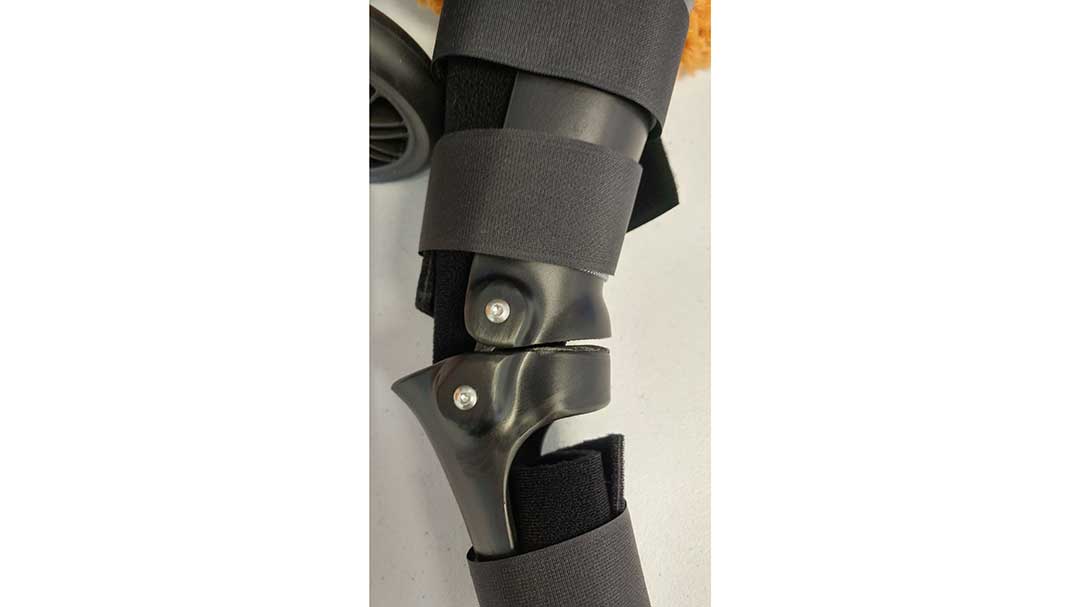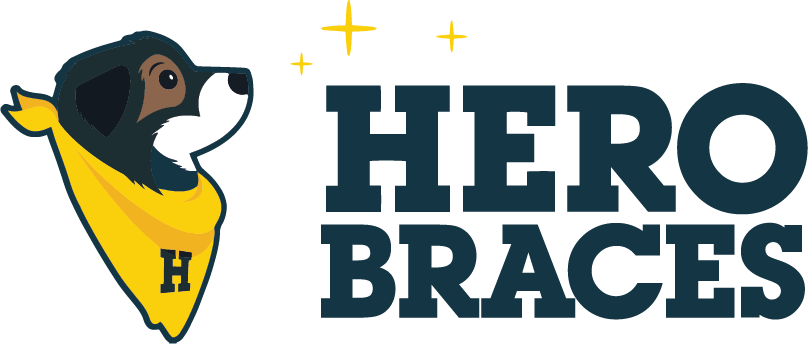Dog Bracing Made Simple
Tips and tricks to help your dog succeed with added support

Dog Bracing Made Simple
Hero Braces Achilles Tendon Protocol - Conservative Management
Using a Tarsal Brace with Graduated Articulation
Most would agree that as practitioners we need to protect the Achilles tendon injury/repair early on and then slowly load the Achilles Tendon over time. That said, it is difficult to find a consensus on how to implement these needs. Below is a jumping-off point, a work in progress, based on my experiences and the knowledge gained from research of my peers. Please leave comments on how you think we should make it better.
Partial Achilles Tendon Rupture or Post -Operative Arthrodesis
Day 0 -Impression/casting at the time of diagnosis of a partial tear or end of surgery. Custom Orthotic will be taking the place of Bivalve Cast/Splint in 2-3 weeks.
Weeks 0-2 -After Casting/Impression is performed place in Bivalve cast/Splint with dorsiflexion of toes, if possible at 45 degrees. Tarsus will typically be at 135 degrees extension. Recheck the bivalve cast weekly.
Weeks 3-7 Sutures removed at 10-14 days post-op if used. Fit orthotic to pet. Orthotic is non-articulating. Wear in place of cast 24/7. Owner/practitioner to check 3-4 times a day for pressure sores. Begin rehab therapy. Continue rechecks every two weeks with Surgeon/RDVM.
Weeks 8-11 -Cut brace to allow 15 degrees of articulation if a partial tendon rupture. Continue rehab in the clinic and at home.
Weeks 12-16: Pet out of brace or using as a “Sports Brace,” times of high activity. The pet needs to have sufficient strength to maintain a normal standing angle in Hock. The pet should be challenged with the rear leg in a “Three-legged Stand.” Typically 135 Degrees of extension.
NOTE: Time intervals are stated as a guide. Some pets will need more or less time as they heal. This is where the “Art” of being a Practitioner is applied.
Items to consider:
Normal Range of Motion of the Tarsus. Flexion is 40 Degrees, and Extension is 170 Degrees in a relaxed pet.
The normal Standing angle of the Tarsus for Tarsal Arthrodesis is 135 Degrees.
According to Millis and Levine: Early partial weight-bearing and joint movement creates stress to promote parallel collagen alignment and increase tendon strength.
The Hero Brace Tarsal Orthotic may help bypass or relieve weight-bearing forces to the healing tendon, much like incorporating a walking ring into a cast or external fixator.
References:
Small Animal Surgery 3rd Edition. Fossum pgs 1322-1324
Veterinary Surgery Small Animal 2nd Edition. Johnston and Tobios Vol 1 pgs 1204-1209
Small Animal Orthopedics and Fracture Repair 4th Edition. Brinker, Piermattei and Flo pgs 674-678
Canine Rehabilitation and Physical Therapy. Millis and Levine 2nd Edition pg 573
“Calcaneal Tendon Tears in Dogs” Four Leg Rehab Inc Newsletter March-April 2012 Vol1 : Issue 1. Laurie Edge Hughes
“Post-Operative Management of Tendon Repairs” Four Leg Rehab Inc Newsletter May-June 2012 Vol 1 : Issue 2. Laurie Edge Hughes
Copyright Paul Brumett DVM, CCRP, cAVCA

Dog Bracing Made Simple
Achilles Ruptures in Dogs - Hunter's Story
It’s been a relaxing spring day at your house. As you leave the kitchen, you realize that your senior Golden Retriever is no longer by your side.
You look back to see him struggling next to the dishwasher, one rear leg caught under the sharp sheet metal edge. You act quickly. Minutes later, you have untangled his leg and are confronted with a deep cut above his ankle.
Your mind races as you prepare to go to the vet. Is this repairable? How long will it take to recover? Who has the knowledge to help?
Hunter’s Journey
This is what happened to Hunter, Amy’s low-key Golden Retriever. Amy knew that he needed immediate attention and had the Achilles tendon on the back of his ankle repaired by a veterinarian.
Amy was told Hunter would be in a cast for 8 weeks and then start several months of physical therapy or “Rehab”. During rehab, the tendon would still be healing and would need support if Hunter were to go back to his normal play quickly. Who could help guide her through the healing process and provide a quality brace?
His Therapist to the Rescue
Luckily, Jolene, Hunter’s rehab therapist at VCA PineRidge, suggested supporting the leg with a custom ankle brace from Hero Braces. Their team guided Hunter through the process to create a brace to support his hock. This brace allowed Hunter to be more active right away and served to protect the Achilles tendon as he regained strength.
Amy felt that wearing the Hero Brace gave Hunter more confidence to move and play during his recovery, and now, a year later, he continues to do well. Even though Hunter has been given permission to go without his Hero Brace, ”Hunter is more confident when he wears it,” Amy noted, and “Hunter won’t jump or use stairs without his brace.” He is “just as mobile now with the brace as he was before” his injury.
“His brace gives him confidence so he can let his playful spirit shine!”
Healing Achilles Injuries in Dogs
Achilles tendon injuries can be debilitating if left alone, and even after corrective surgery, the tendon is never quite as strong and can require continued custom support. Hero Braces has a custom Ankle Brace that allows your dog to play sooner and fits in nicely with traditional Rehab.
Although Hunter still wears his brace daily, many pets graduate and no longer use the brace daily or use it only when playing hard or going on hikes. As an owner, it’s comforting to know that Hero Braces is there to help speed recovery and prevent re-injury.
Does your dog have an Achilles injury? Consider a hock brace.
Update: After a full life, our gentle-souled Hunter recently crossed the rainbow bridge. He will always be close to our hearts. Hunter's mom, Amy, made a beautiful video of his life. Please watch it here.






